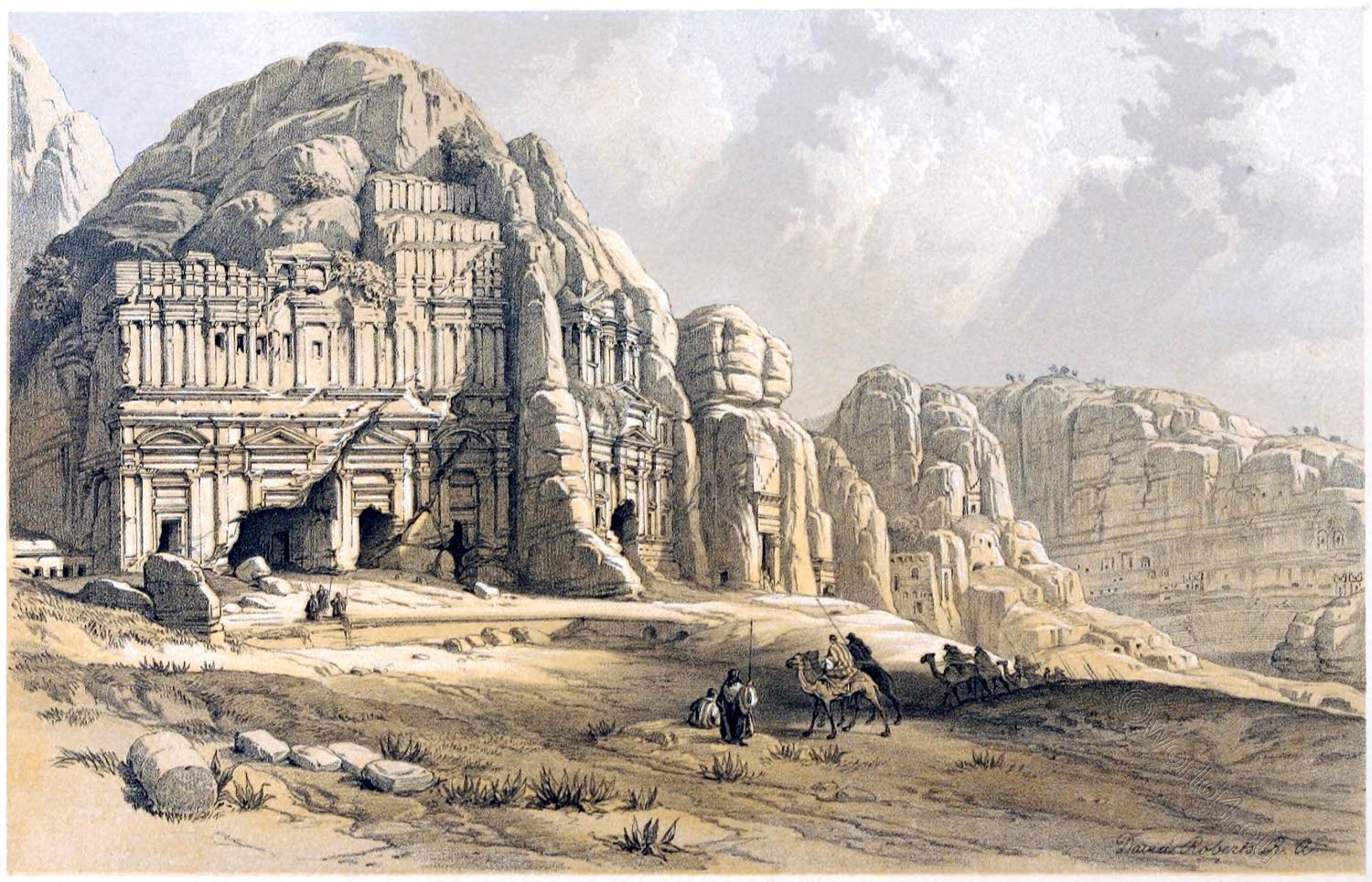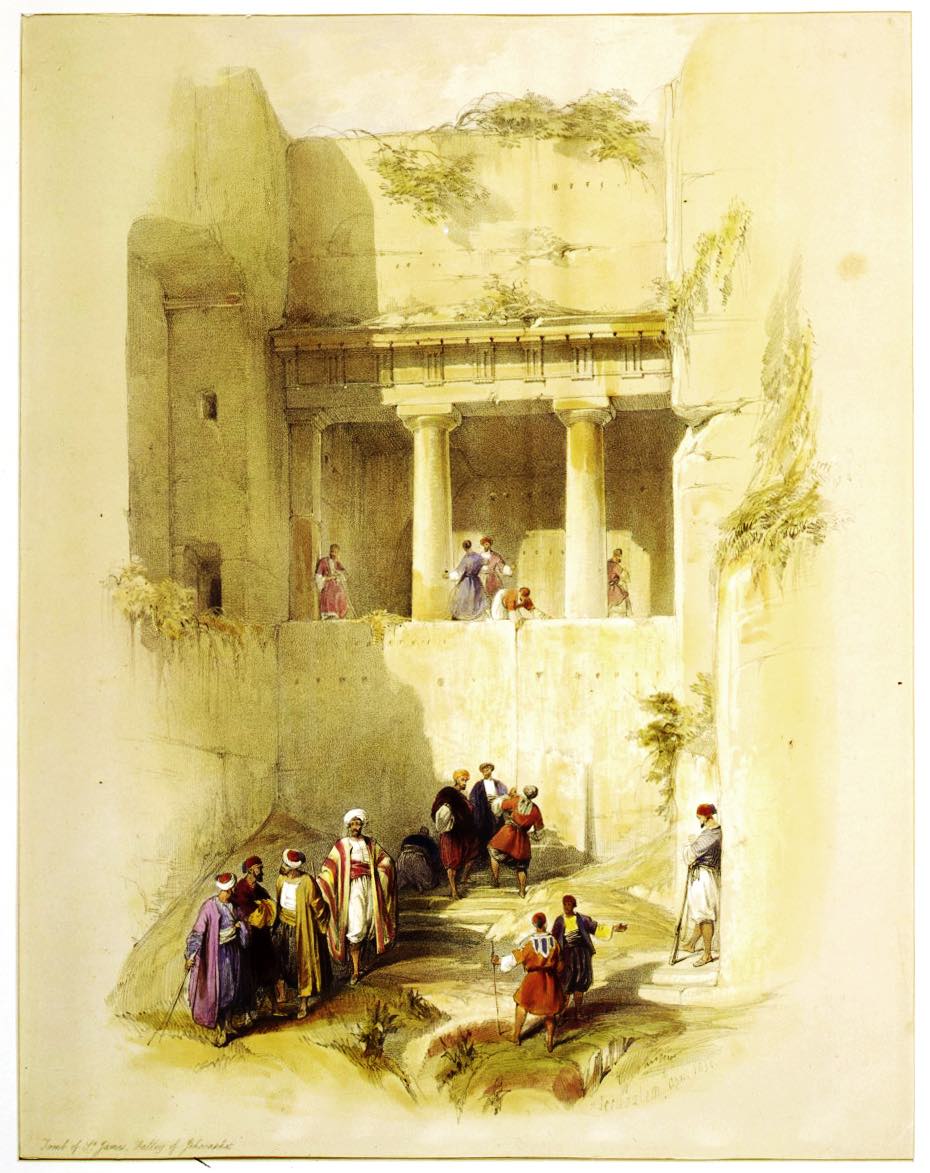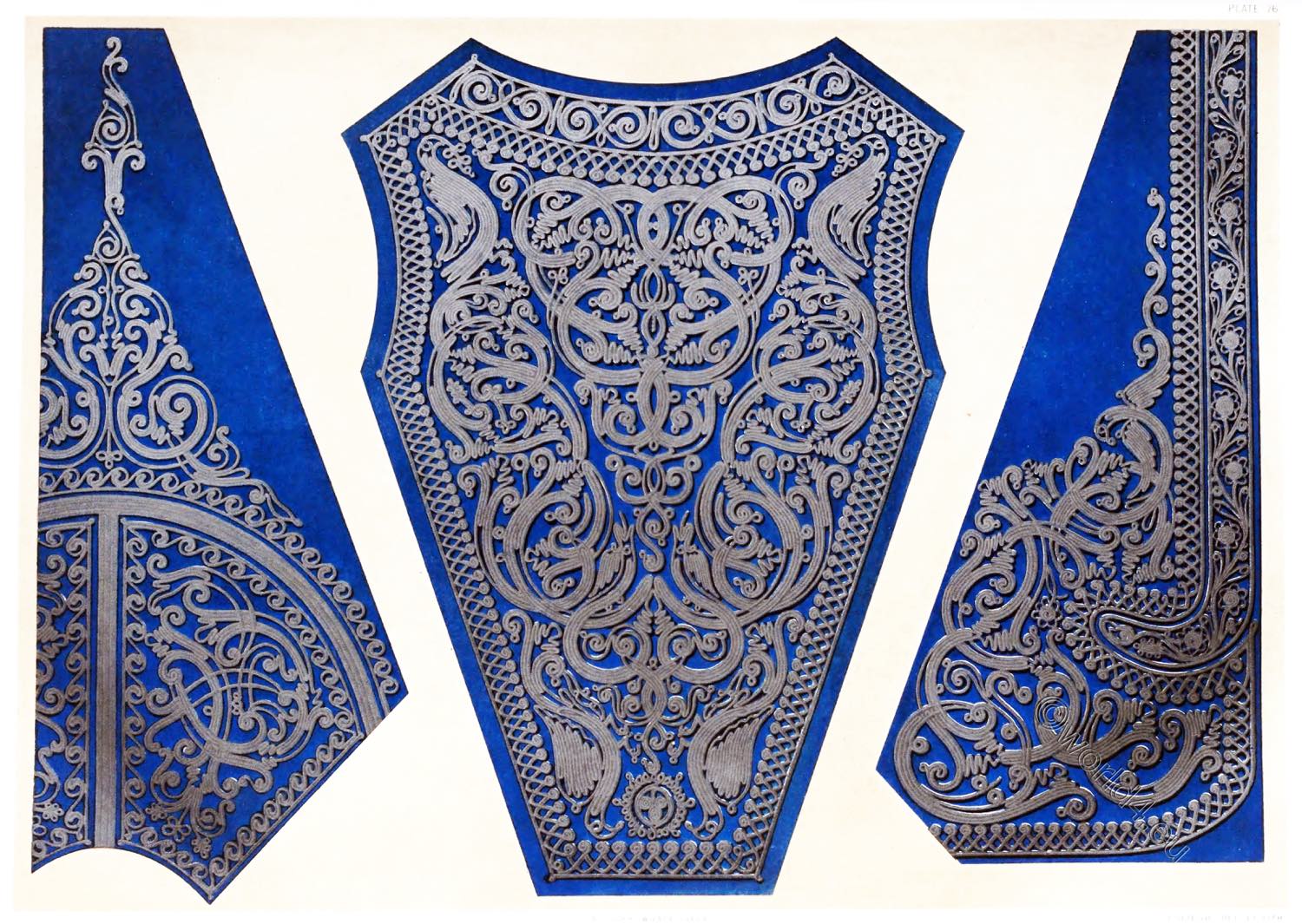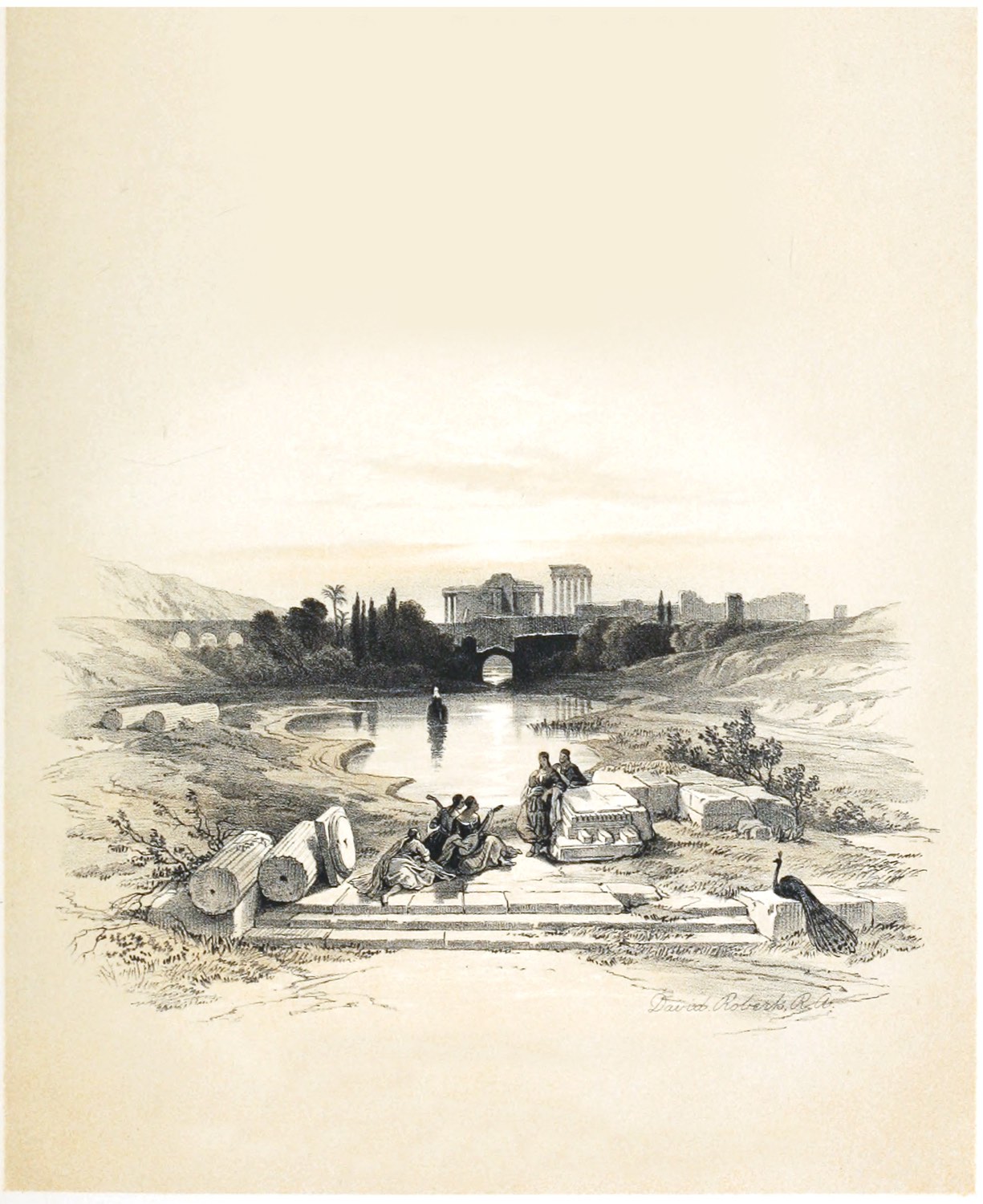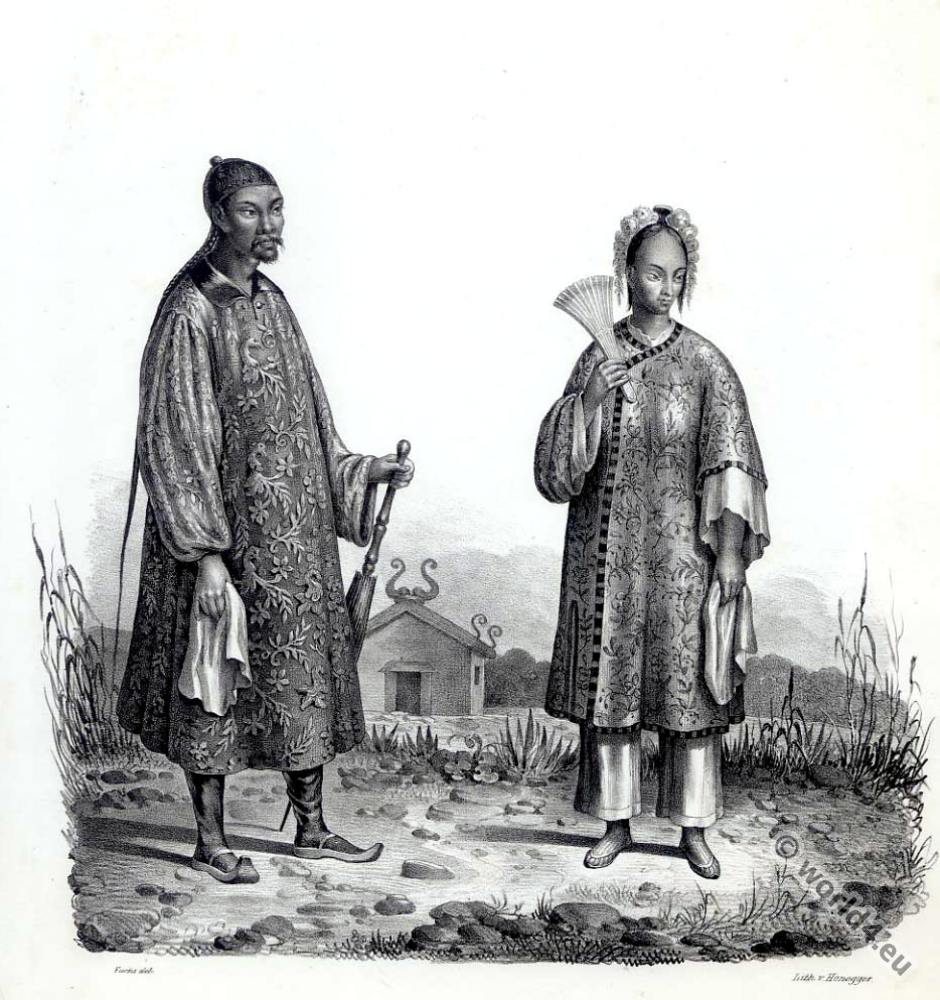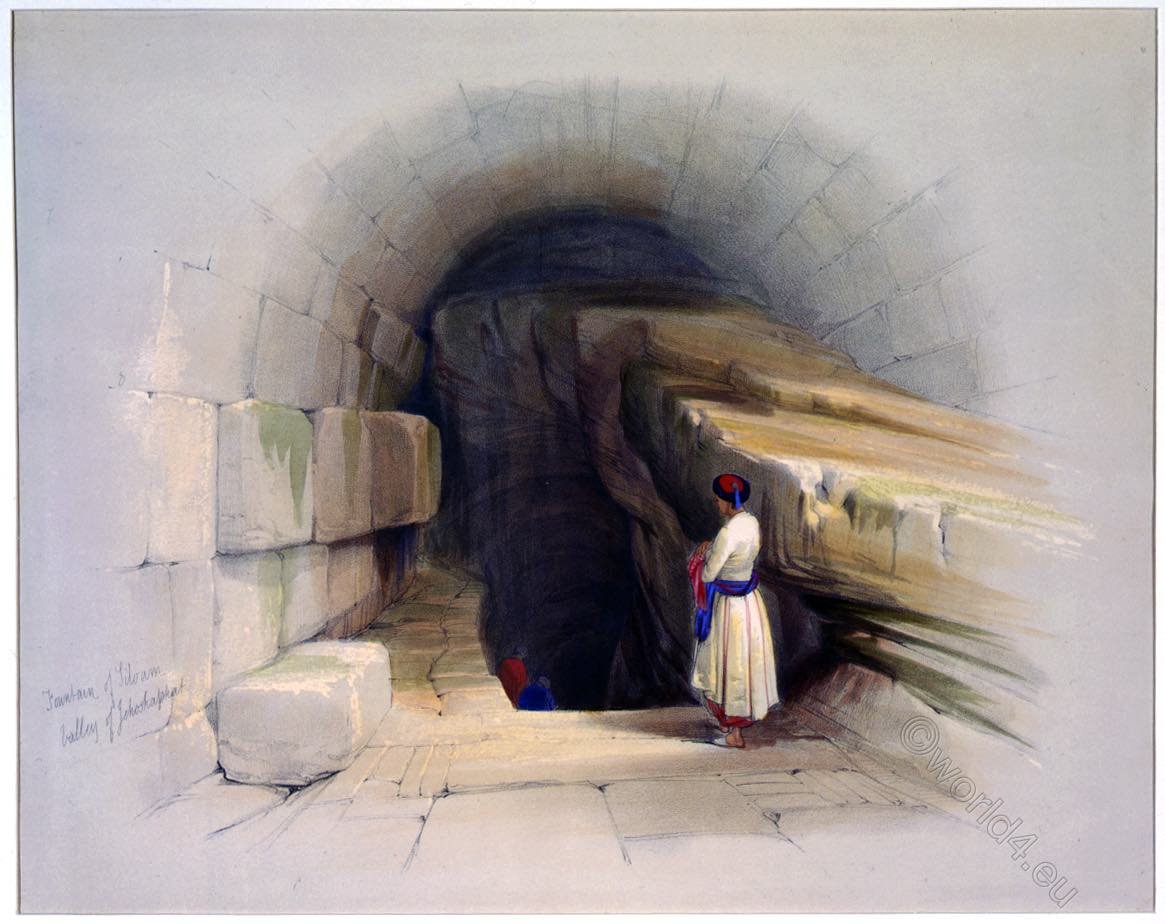
THE UPPER FOUNTAIN OF SILOAM.
Siloam consists of two basins or fountains, the upper one of which is a fissure in the solid rock. A flight of steps leads down on the inside to the water, and close at hand, on the outside, is the reservoir.1) This seems to be generally acknowledged as
"Siloa's brook that flowed
Fast by the oracle of God."
The drawing of the water from Siloam in the Feast of Tabernacles (though no direction on the subject is to be found in the Mosaic Law) became a remarkable ceremonial in the latter ages of Judea.
The priest with his attendants received it from the fountain in a golden vessel, and then, returning to the Temple, mingled it with wine, and poured it on the altar. The origin of the custom has been the subject of much discussion among the rabbis, but it is generally supposed to have originated in the verse of Isaiah (xii. 3), “With joy shall ye draw water out of the wells of salvation.”
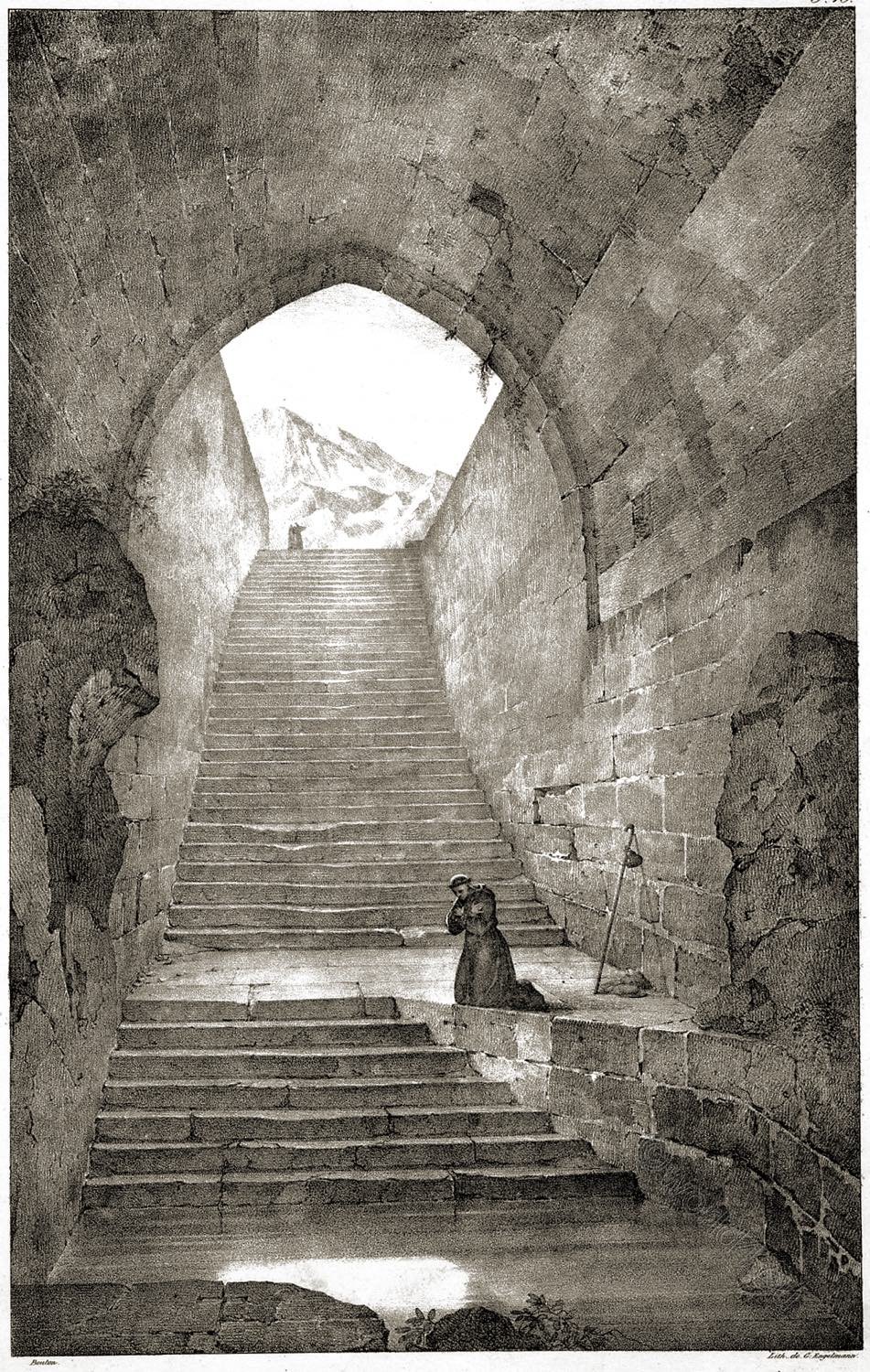
Interieur de la Piscine de Siloé à Jérusalem (Pool of Siloam). Illustration par Bouton tiree de l ouvrage de Forbin (1777-1841). Voyage dans le Levant by Louis Nicolas Philippe Auguste comte de Forbin (1777-1841). Paris: De l’Imprimerie royale, 1819.
Much exhibition of popular rejoicing, with sounding of trumpets and horns, accompanied this ceremony. The whole Feast of Tabernacles was peculiarly a display of popular exultation, as it occurred in the finest season of the year, after the gathering of all the harvests; was under tents and bowers, reminding the people of the happiest scenes of the national life; and was typical of the period when earth is to be paradise again, and Israel is to be restored for ever.
The water from Siloam was drawn on every day of the seven during which the feast continued. But the most solemn outpouring was on the last, the chief day of this memorable celebration. Our Lord refers to it, as prefiguring the outpouring of the Holy Spirit (John, vii. 39.)
1) Robinson, Biblical Researches, vol. i. p. 497.
Source: The Holy Land, Syria, Idumea, Arabia, Egypt, & Nubia, by David Roberts, George Croly, William Brockedon. London: Lithographed, printed and published by Day & Son, lithographers to the Queen. Cate Street, Lincoln’s Inn Fields, 1855.
Continuing
Discover more from World4 Costume Culture History
Subscribe to get the latest posts sent to your email.


